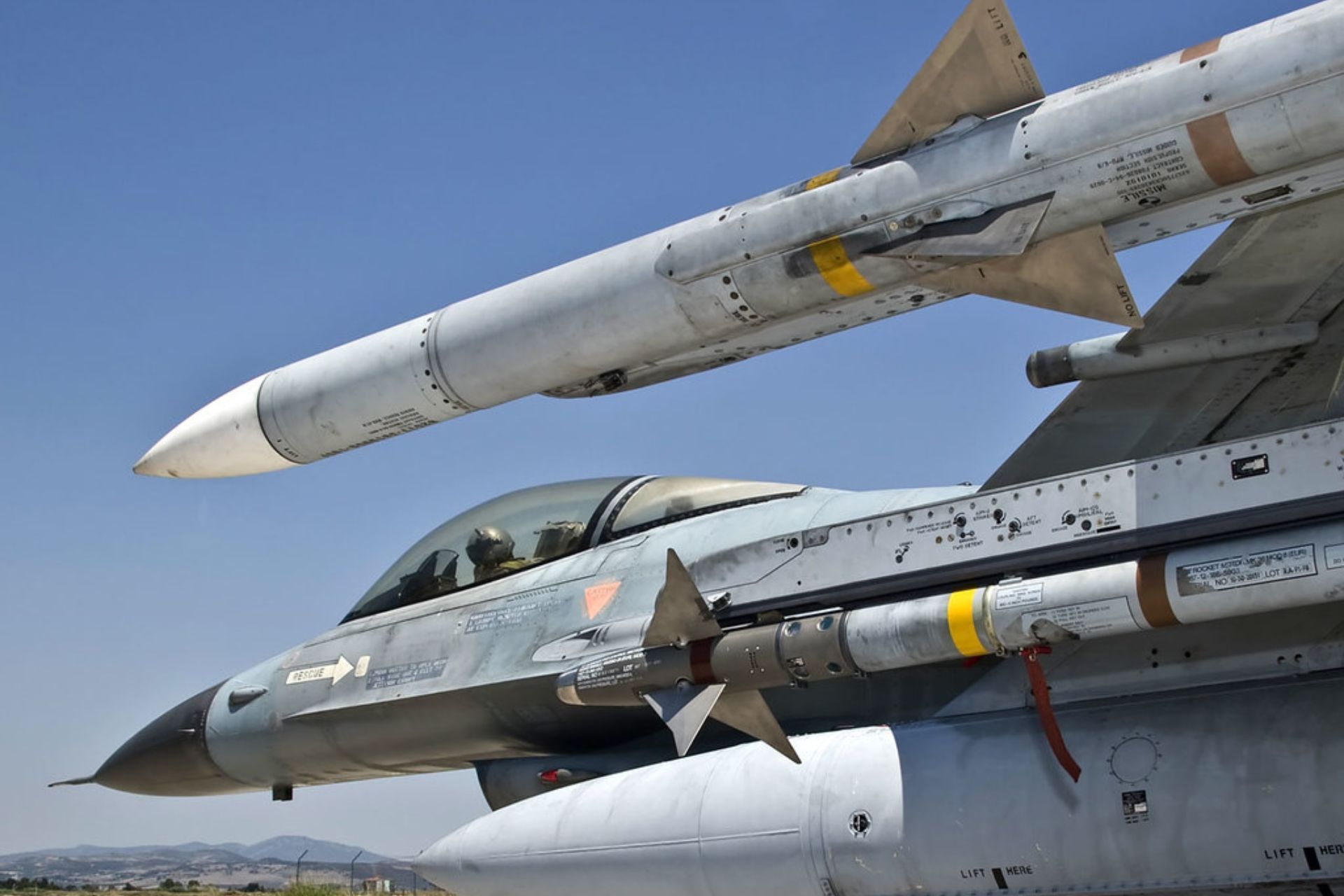Breaking News
Situation Brief | Hellenic Air Force: Rafale and F-35 against Eastern Threats.
Greece has recently accelerated its efforts to modernize and strengthen its air fleet, a move largely driven by the need to counter Turkey's regional ambitions and ensure national security. With an impressive fleet of approximately 227 fighter jets, the Hellenic Air Force (HAF) ranks among the largest in NATO, surpassing countries such as the United Kingdom and France (when considered individually). This modernization is part of a broader defense strategy aimed at protecting Greek interests in the Eastern Mediterranean, a region marked by growing geopolitical tensions.
Follow Army Recognition on Google News at this link

F-35 demo team in flight, F-35 will soon equip hellenic air force against new regional threats (Picture source: Lockheed Martin )
A Diverse and Powerful Fleet
Currently, the Hellenic Air Force (HAF) operates a diverse fleet, combining modern fighters with older aircraft. It has 152 F-16 Fighting Falcons in various configurations (Block 72, Block 52+/ADV, Block 50, Block 30), which form the backbone of the Greek air fleet. The HAF also utilizes 33 F-4E Phantoms, aging aircraft primarily used for surveillance and tactical bombing missions. Additionally, 24 Dassault Mirage 2000-5 Mk2, powerful interceptors affected by insufficient maintenance, remain in service. Lastly, the fleet includes 18 Dassault Rafale F3Rs, among the most advanced combat aircraft in the Greek arsenal.
F-16 Modernization
Currently, the Hellenic Air Force (HAF) operates a diverse fleet, combining modern fighters with older aircraft. It has 152 F-16 Fighting Falcons in various configurations (Block 72, Block 52+/ADV, Block 50, Block 30), which form the backbone of the Greek air fleet. The HAF also utilizes 33 F-4E Phantoms, aging aircraft primarily used for surveillance and tactical bombing missions. Additionally, 24 Dassault Mirage 2000-5 Mk2, powerful interceptors affected by insufficient maintenance, remain in service. Lastly, the fleet includes 18 Dassault Rafale F3Rs, among the most advanced combat aircraft in the Greek arsenal.

Hellenic Air force Rafale F3 ( Picture Source HAF)
F-16 Modernization
One of the key projects for the HAF is upgrading 84 of its F-16s to the Block 70/72 "Viper" configuration, the most advanced version available for this aircraft. The program, in collaboration with Lockheed Martin, aims to equip these planes with improved electronic systems, more efficient radars, and advanced electronic warfare capabilities. This process is expected to be completed by 2027. Additionally, 38 F-16 Block 50s will also be upgraded using spare parts from the converted "Vipers."
Rafales: A New Asset for the HAF
The introduction of the Dassault Rafale F3R represents a turning point for the Hellenic Air Force. Greece has already received 18 of these aircraft, and discussions are underway to acquire more. The goal is to form two full squadrons of Rafales, totaling 36 aircraft, to enhance Greece's interception and air superiority capabilities in the face of regional threats.
Replacing the Phantoms and the Future of the F-35
Although still in service, the F-4E Phantoms are set to be gradually phased out. Their replacement will be ensured by the introduction of the F-35A Lightning II, a fifth-generation stealth fighter. Greece has signed a contract for the delivery of 20 F-35As, with an option for 20 additional aircraft in the future. These planes will provide the HAF with advanced strike and surveillance capabilities, allowing Greece to maintain a technological edge over Turkish air forces.

Hellenic Air force F-16 block 30 fully equipped with AIM 120 AAMRAAM and AIM-9L (Picture Source: HAF)
Ambition 2030
By 2030, the Hellenic Air Force aims to consolidate its fleet around three types of aircraft: the F-35A Lightning II, the F-16 Block 70/72 "Viper," and the Dassault Rafale F3R. This combination of fourth- and fifth-generation aircraft is designed to meet the demands of a modern defense, capable of deterring any aggression and operating effectively in complex combat environments, particularly countering the S-400 air defense systems currently being integrated into Turkish forces.
Why So Many Combat Aircraft?
The answer to this question lies in the historical rivalry with Turkey. Relations between Athens and Ankara are marked by ongoing tensions, fueled by territorial disputes in the Aegean Sea and competition over energy resources in the Eastern Mediterranean. Turkey also possesses a significant and modernizing air force, currentrly more than 245 jets, with upgraded F-16 aircraft and ambitions to enhance its aerial capabilities with anti-aircraft defense systems and potentially next-generation fighters.
For Greece, maintaining a large and modern air fleet is essential to preserving a strategic balance in the region and protecting its sovereignty. Moreover, alliances with partners like France and the United States bolster Greece's position on the international stage, providing access to cutting-edge technologies such as the Rafale and the F-35.
Conclusion
Greece's efforts to strengthen its air power reflect a clear strategy aimed at securing national defense in the face of geopolitical challenges in the Eastern Mediterranean. By modernizing its aircraft fleet and investing in advanced technologies, Greece positions itself as a key player in the region, capable of deterring any threats while safeguarding the security of its borders and its interests.
Greece is set to become a key aerial partner for securing the Eastern Mediterranean, a region currently subject to numerous tensions, both between nations and among paramilitary groups.


























